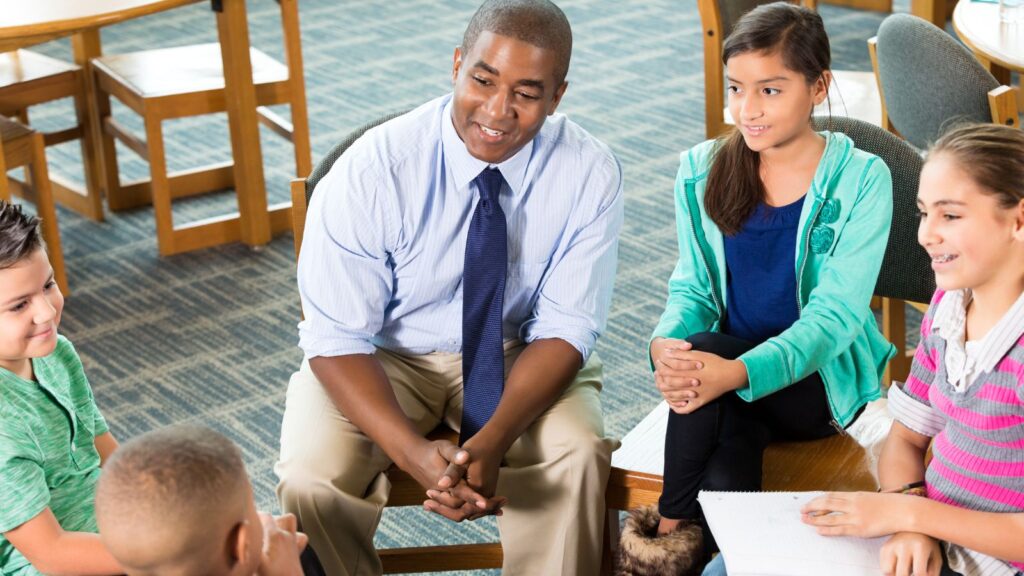January 23, 2024
The Road to Restorative Justice: How Virginia Can Create Safe and Restorative Environments for Students
Students deserve for their classroom to be a safe haven, where their holistic development is both understood and nurtured, and where challenging behaviors are handled with care and a focus on positive change. But harsh, punitive disciplinary practices such as zero-tolerance policies, meant to curb challenging behaviors, often lead to higher rates of suspension, expulsion, and even worse, future involvement with the legal system. Properly implementing holistic practices to address student behavior can greatly reduce the number of children being referred to law enforcement, thus reducing their interactions with the criminal legal system and keeping them in the classroom. Lawmakers should take advantage of the current legislative landscape and make meaningful changes that will create safe and restorative environments for all students.
The school-to-prison pipeline is a phenomenon where children are funneled from public schools into the juvenile and criminal legal systems. This phenomenon can unfortunately be found here in Virginia. Here, Black students are more than 2 times as likely to be referred to law enforcement than their white counterparts. Black youth make up 21% of Virginia teens age 15 to 17, yet, schools are suspending more than twice that share and reporting them to juvenile courts (57% and 49%, respectively). Local youth jails intake and detain more than twice the Black youth population (42% and 54%, respectively), and the Department of Juvenile Justice (DJJ) holds more than 3 times the Black youth population in custody (72%), according to 2019 research. Virginia broke an unfortunate record in 2015 when a study showed that the state led the nation in student referrals to law enforcement, with a referral rate of almost 3 times the national average. To make matters worse, every Virginia locality that’s in the top 10 in their rate of sending young people to the custody of the DJJ has a child poverty rate above the state average and a higher-than-average share of teenagers who are Black. Instead of sending children who already face significant barriers into the criminal legal system, shouldn’t the state be helping them when they need it the most?

Across the nation, school districts are shifting their disciplinary practices toward a more holistic approach through a practice known as restorative justice. While there is no singular definition of restorative justice, at its core, it is an innovative approach that prioritizes repairing relationships over the need for punishment and supports students in resolving conflict and learning from their mistakes. This approach recognizes the humanity of students and seeks to understand the whole child. Some of the key components of this practice include relationship building and strengthening their social and emotional skills.
This student-centered approach has already found success within a variety of schools around the country. Numerous studies across the last 20 years have found significant reductions in serious student offenses and exclusionary discipline measures. A study of an Oakland, CA middle school that implemented restorative justice practices saw a reduction in suspensions. In Pittsburgh, PA, restorative justice led to lower suspension rates for elementary students, Black students, students in low-income families, and female students. Even in Virginia, we’ve taken legislative measures to address student discipline. In 2017 and 2018, the General Assembly amended the state code to provide guidance on alternative discipline measures and placed limits on suspensions for pre-K through 3rd-grade students. A handful of school districts have even taken the initiative to implement restorative justice practices in their schools. However, lawmakers must take further steps to apply this approach consistently across school divisions and promote a supportive environment in schools.
There is a clear need for restorative justice programs to be implemented in schools across the commonwealth and a strong will among education advocates to make it happen. But they cannot do it alone. Lawmakers have an opportunity to invest in proven practices to help our students thrive and they should take that opportunity this legislative session. But how exactly? By investing in positions that are proven to reduce student interactions with law enforcement, such as vice principals or counselors. We can also invest in building strong school-community partnerships by bringing in credible messengers — community leaders, advocates, or individuals with relevant life experience — to mentor at-risk youth. These are just two of many ways in which we can support the holistic development of young people. We have the opportunity to create safe and restorative environments for every student. Let’s not end this legislative session without making sure schools have the resources to make it happen.
Category:
Education
